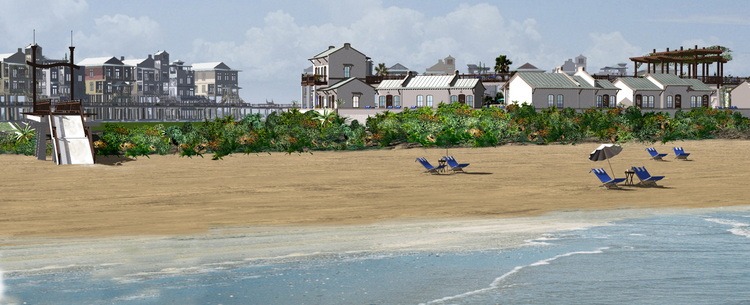Which Comes First? Property Type or Location?
Think about your ideal second home. What immediately comes to mind?
Did a specific type of home come into your head, or did you instead picture a location, such as on the beachfront? If you plan to buy a second home with someone else (such as a spouse, significant other, or friend), ask that person the same question. There’s no wrong answer: It’s a matter of personal choice and your home-buying goals.
Knowing whether property type or location is driving your decision will help you create a balance between the two, especially when you must make tradeoffs. For example, you might decide to buy a condominium instead of a single-family home to buy in a more desirable area. Or you might decide to shift your location if your heart is set on owning a single-family home.
Reviewing your options is not just the home’s shape, size, and décor, but also how the ownership is legally structured.
Overview of the property types
Single-family home. A dwelling meant for one family or household that is not attached to other homes. Ownership includes both the house (structure) and the land it sits on.
Multifamily home. A dwelling meant for two or more families or households that is not attached to other homes. You’ve heard of them as duplexes (two families), triplexes (three families), or quadruplexes (four families). Ownership includes both the house (structure) and the land it sits on. Homes with five or more units are not addressed in this book, because they’re considered commercial properties and are a different ballgame (for one thing, they require a commercial as opposed to a residential mortgage).
Townhouse. The term “townhouse” or “townhome” was originally coined to describe units within row housing tracts, usually in urban areas. Now it refers to a dwelling, usually with two or more floors, which shares one or more common walls with similar, attached structures to the left and right and has its own entrance. That means you can have neighbors on either side of you, but not above or below. Ownership includes both the unit (interior and exterior, meaning walls and roof), and the land it sits on, plus a proportionate interest in the common areas. These common areas are maintained and managed by a homeowners’ association, to which you normally pay a monthly fee. Owners abide by a set of covenants, conditions, and restrictions (CC&Rs) governing use of their property and other community matters.
Condominium (condo). A dwelling (usually on one floor) surrounded by similar units within a larger building. The units often share a main entrance. Units are owned individually, while the land and any common areas are owned jointly. The exterior parts of the buildings and the common areas are maintained and managed by a homeowners’ association, to which you normally pay a monthly fee. Owners abide by a set of CC&Rs governing use of their property and other community matters.
Cooperative (co-op). A dwelling is like a condominium, except that the residents are shareholders of a corporation that, in turn, owns the individual units as well as the land. The corporation holds the deed on the property, while you’re issued a stock certificate specifying how many shares of the corporation you own. The larger, more desirable units require owning a high percentage of shares. You also receive a lease allowing you to occupy your individual unit, much like a tenant would. Shareholders or owners elect a board of directors, which functions like a homeowners’ association, setting and collecting monthly dues for maintaining the land and common areas, and upholding the community’s rules and regulations.
Distinguishing Between Townhouses, Condos, and Co-Ops
Confusion reigns when it comes to differentiating between these three Property Types—partly because sellers sometimes use the wrong names themselves. Many people mistakenly believe that the differences are physical, as between a brick row house and an urban loft. However, the main differences depend on how your property ownership is legally structured. Let’s start with the central commonalities and differences between a townhouse and a condominium, which have to do with how much you own beyond the interior of your own unit, and in what form you own it.
For starters, in both townhouses and condominiums, any common areas—parking, planted areas, pool areas, and walkways—are partly yours, as you own them jointly with all your fellow owners. But in a townhouse, you own all your own unit—both the inside and the outside—plus you own the land upon which it sits. In a condominium development, by contrast, you own the inside of the unit, but not the exterior, and not the land upon which it sits. As for co-ops, your ownership is defined not by physical portions of the property, but by the number of shares you own in the corporation that owns the property. You have usage rights to an individual unit and to common areas.
You can’t tell by looking.
Many condominium developments are built to look like townhouses, some co-ops are built to look like apartments—it’s easy to be totally misled. Remember, legal ownership structure is the main determinant of whether a property is a condominium, townhouse, or co-op.
That’s why it’s important to examine the rules of ownership provided by the governing body or association (usually called “covenants, conditions, and restrictions,” or CC&Rs).



Leave a Reply
You must Register or Login to post a comment.
Become a registered member, it is fast, fun, and free! Gain access to sales analysis, conversations, and much more! Texas state law requires membership before we can share sales information or talk about subjects relevant to ownership. See our membership page for more details.